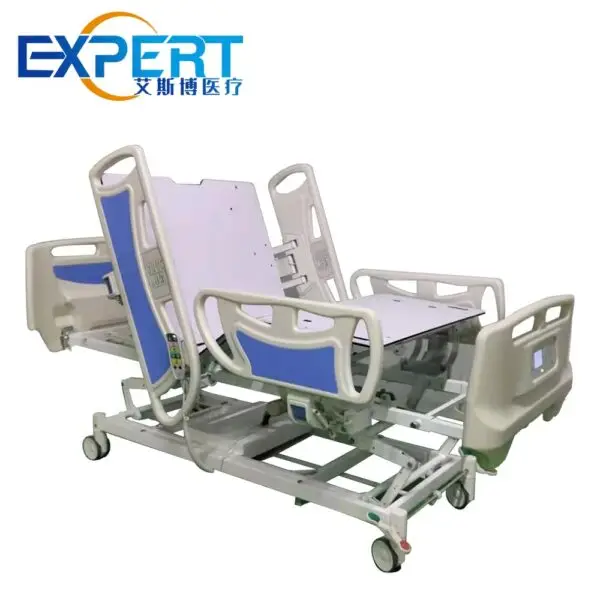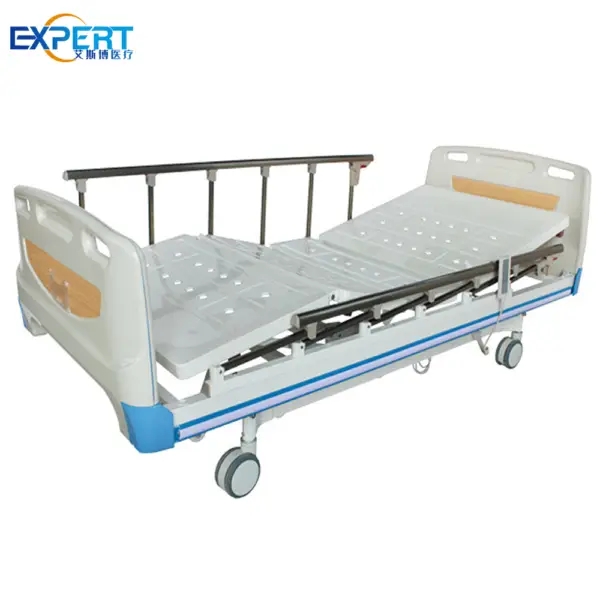Endereço
304 North Cardinal St.
Dorchester Center, MA 02124
Horas de trabalho
Segunda a sexta: 7h00 - 19h00
Fim de semana: 10h - 17h
Endereço
304 North Cardinal St.
Dorchester Center, MA 02124
Horas de trabalho
Segunda a sexta: 7h00 - 19h00
Fim de semana: 10h - 17h

Hospital beds with rails are a crucial component of modern healthcare, designed to enhance patient safety and comfort.
Antes de mergulharmos no conteúdo, adoraria que você se juntasse a mim nas minhas plataformas de mídia social, onde compartilho mais insights, interajo com a comunidade e posto atualizações. Veja como você pode se conectar comigo:
Facebook:https://www.facebook.com/profile.php?id=100071234835011
LinkedIn:https://www.linkedin.com/company/74943205/admin/dashboard/
YouTube:www.youtube.com/@shandongexpertmedicalequip4695
TikTok:www.tiktok.com/@expertmedical
Agora, vamos começar nossa jornada juntos. Espero que você ache o conteúdo aqui perspicaz, envolvente e valioso.

Hospital beds with rails are a crucial component of modern healthcare, designed to enhance patient safety and comfort. These specialized beds, equipped with protective rails, play a pivotal role in preventing falls, maintaining patient alignment, and ensuring overall well-being. In this comprehensive guide, we will delve into the multifaceted benefits of hospital beds with rail, exploring their various types, key considerations for selection, and how they contribute to a safer healthcare environment.
Hospital beds with rail serve a multitude of purposes, each contributing to improved patient care and safety:









Hospital beds with rails come in a variety of designs to accommodate diverse patient needs and preferences. Some common types include:
When selecting hospital beds with rails, several key factors should be carefully considered:
Hospital beds with rails offer numerous benefits beyond patient safety:
| Recurso | Hospital Bed with Rails | Hospital Bed Without Rails |
|---|---|---|
| Fall Prevention | Significantly Reduced | Increased Risk |
| Patient Support | Aprimorado | Limitado |
| Segurança | Melhorou | Diminished |
| Conforto | Increased | Moderado |
| Independência | Promoted | Limitado |

While hospital beds with rails offer numerous benefits, it is essential to address potential concerns associated with their use:
To minimize these risks, healthcare providers should prioritize patient assessment, proper hospital bed with rails selection, and ongoing monitoring.
Hospital beds with rails are an essential component of modern healthcare. By providing support, preventing falls, and enhancing patient safety, these rails play a vital role in improving patient outcomes. While there are potential risks associated with their use, these can be minimized through careful consideration, proper implementation, and regular assessment. As healthcare professionals continue to seek innovative ways to improve patient care, the importance of hospital beds with rails will only continue to grow.
São hospital beds with rails required by law?
While there are no specific laws mandating the use of hospital beds with rails, many healthcare facilities have their own policies and procedures in place to ensure patient safety.
Can bed rails be harmful?
Yes, if not used correctly or if the patient’s needs are not adequately assessed, hospital bed rails can pose a risk of entrapment and injury.
How often should bed rails be assessed?
The frequency of bed rail assessments should be based on the patient’s individual needs, risk factors, and changes in condition. Regular assessments help ensure that the rails are being used appropriately and that the patient’s safety is prioritized.
What are some alternatives to bed rails?
Alternatives to hospital bed rails include low beds, floor mats, and alarms. However, these alternatives may not provide the same level of protection and support as hospital bed rails, and their effectiveness may vary depending on the patient’s specific needs.